180 outlets and over S$100M turnover: Scanteak CEO on reviving her dad’s furniture business
The second-gen entrepreneur went from Hollywood to teak wood, taking over her dad's business that was "in the red" with only three outlets.
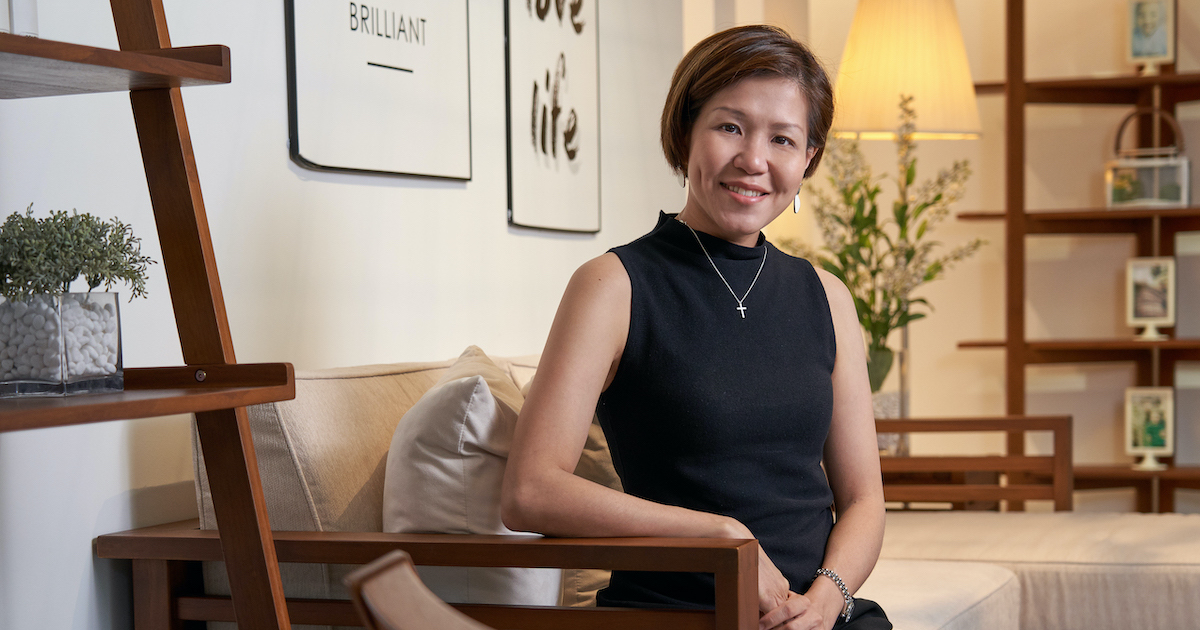
Scanteak, a renowned homegrown furniture brand known for its premium designs and impeccable quality, has a humble origin story with roots that trace back to a rag-to-riches tale.
Despite being a bright child, founder Lim Pok Chin lacked financial resources that hindered his educational aspirations. This prompted him to pursue business as a means to create opportunities for himself.
In the early days, he took on various menial jobs, such as being a coffee boy, carpenter’s apprentice, and a house painter. Despite the hardships, his entrepreneurial spirit remained unwavering.
The foundation of Scanteak began in 1974 with Hawaii Interior Decorations, which specialised in painting houses. His wife was his first employee and with only a modest 400 square feet office space in Joo Chiat, the company expanded rapidly, establishing two showrooms within just two years.
Although Pok Chin had a Chinese education and upbringing, he recognised the power of branding and aimed for an English-sounding company name. Inspired by the popular TV show “Hawaii Five-O,” he named the company Hawaii Interior Decorations.
However, driven by a desire to explore new avenues, Pok Chin ventured into the furniture trade, which deals with the import, export and retail of furniture. In 1979, Hawaii Furnishings was incorporated, achieving an impressive annual turnover of S$10 million within five years.
Unfortunately, the ASEAN financial crisis posed severe challenges, pushing the business to the brink of bankruptcy. The fluctuating currency rates led to a substantial increase in the cost of imported goods, making it almost impossible to sell them at profitable prices.
In those darkest moments, a glimmer of hope emerged as Pok Chin, with help from his friends, decided to “restart” the business. That was how Scanteak was born, out of a crisis, in 1988.
Inspiring family moments with quality and sustainability
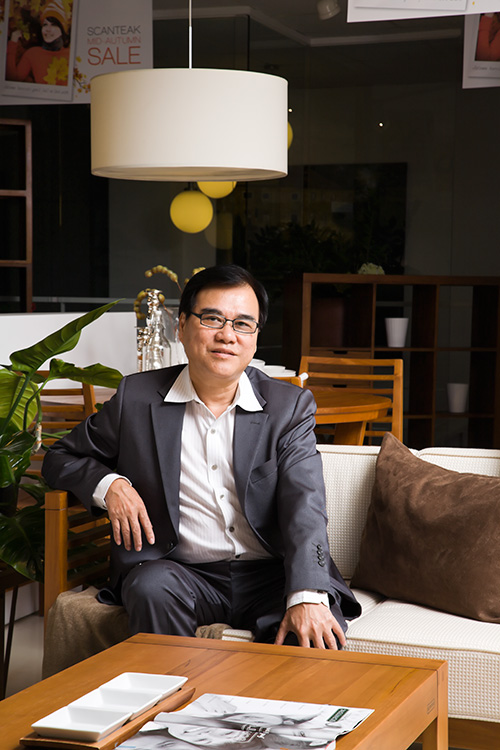 Lim Pok Chin, founder of Scanteak / Image Credit: Scanteak
Lim Pok Chin, founder of Scanteak / Image Credit: Scanteak Pok Chin’s visionary approach led him to incorporate Scandinavian minimalist design philosophies with high-quality teak wood sourced from Southeast Asia. This fusion resulted in Scandinavian designed teak furniture, giving birth to the name ‘Scanteak’.
Scanteak’s mission to excel in home furnishings while maintaining a global presence is driven by their vision of “inspiring family moments worldwide”.
In an interview with Vulcan Post, Jamie Lim, CEO of Scanteak, emphasises their goal of creating furniture that is not only functional, but also fuss-free. For example, Scanteak’s removable sofa covers make it easy to clean up spills, enabling families to enjoy their time together without worrying about potential messes. This commitment to enhancing family experiences aligns perfectly with Scanteak’s overarching vision.
When asked to describe Scanteak in one word, Jamie promptly responds with “quality”. Their furniture are designed in Singapore, often in collaboration with designers, and their materials are carefully chosen for their ease of use, durability, and strength. Their ultimate objective is to fulfil customer satisfaction by offering furniture that is built to last a lifetime.
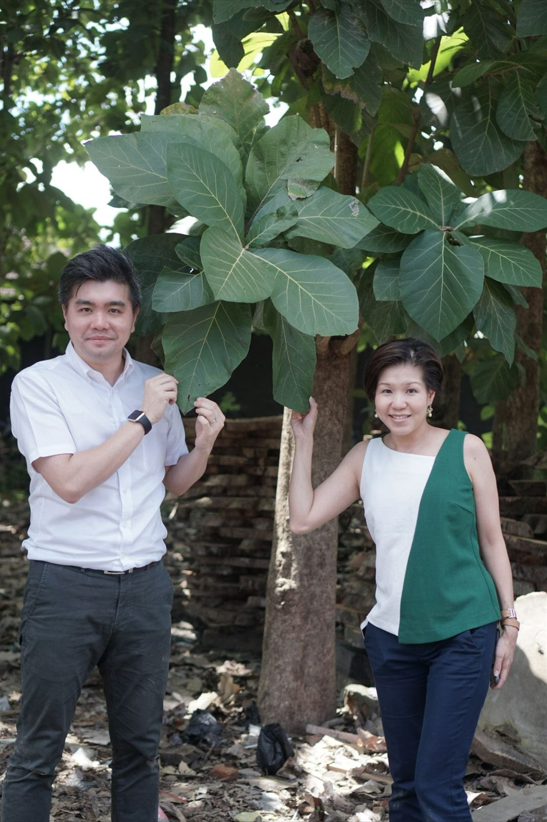 Jamie Lim and her brother Julian at one of Scanteak’s SVLK-certified teak plantation / Image Credit: Scanteak
Jamie Lim and her brother Julian at one of Scanteak’s SVLK-certified teak plantation / Image Credit: ScanteakShe added that sustainability is a key pillar of Scanteak’s ethos. For starters, Scanteak’s plantations are strictly regulated by the Indonesian government, under the supervision of the SVLK, the national authority for timber legality. This means that their trees are responsibly harvested to ensure sustainability.
The company has also taken proactive steps to ensure compliance with formaldehyde regulations in various countries, such as Japan and Taiwan. Formaldehyde, known to irritate the eyes and sensitive skin, poses potential health risks, including certain cancer-causing properties.
In Singapore, it is not required for furnitures to be formaldehyde-compliant but after a conversation with her brother, Jamie realised the importance of consistency and the impact it would have on future generations.
The siblings ultimately made the difficult decision to require compliance across all markets, even if it meant parting ways with long-time “uncle” suppliers. This commitment to providing safe and sustainable furniture stems from their dedication to inspiring family moments and ensuring the well-being of customers and their children.
Scanteak’s sustainability efforts also extend to their manufacturing processes. “Cost savings and sustainability must go hand in hand,” stressed Jamie.
By designing furniture that maximises the use of materials, Scanteak minimises waste and promotes economic sustainability. For instance, they design a range of furniture pieces, from large planks like sofas to smaller accessories like stools, to fully utilise the available wood without unnecessary wastage.
While balancing inventory levels can be challenging, Scanteak is actively adopting artificial intelligence (AI) to improve forecasting accuracy. They are developing a demand-supply forecast system that utilises AI and machine learning algorithms to analyse historical data, supplier information, lead times, and customer demand. “It basically tells us what to sell and when to sell,” she quipped.
This data-driven approach will enhance inventory management and optimise pricing strategies, ensuring Scanteak meets customer needs efficiently and sustainably.
From Hollywood to teak wood
 Jamie Lim, CEO of Scanteak Singapore / Image Credit: Scanteak
Jamie Lim, CEO of Scanteak Singapore / Image Credit: Scanteak Jamie, the daughter of founder Pok Chin, first joined Scanteak as a regional marketing director in 2004, when she was just in her early twenties.
Before joining Scanteak, Jamie pursued a double major in film and marketing, driven by her desire to make a meaningful impact in this world. Her passion for movies led her to explore a career in Hollywood, where she engaged in both the creation and marketing of films.
After spending two years in Los Angeles, Jamie came to realise that business could also serve as a vehicle for creating an impact.
The catalyst for Jamie’s return to Singapore and her subsequent decision to join Scanteak was an unexpected phone call from her father.
He “accidentally” called me in the US after seven years and he claimed that it was a ‘butt call’. Those were the days of Sony Ericsson and to call internationally, it’s not a WhatsApp call away — you have to dial very long numbers.
So when he called me, he invited me to Taiwan and [painted] me a lavish picture of what a successful business person would look like — and it involved helping employees, embracing customers, and spending quality time with family. And I think I was quite sold on those ideas.
– Jamie Lim, CEO of Scanteak SingaporeThis enticing vision, coupled with the allure of becoming part of a grand legacy, ultimately convinced Jamie to take the leap and join Scanteak.
Growing up however, Jamie admitted that she never had the intention to join the family business, so joining Scanteak was a significant step for her.
While there were moments over the past 19 years when she contemplated leaving, she is now grateful for staying because remaining at Scanteak has allowed her to contribute to the family legacy and witness the brand’s growth firsthand.
Harnessing the power of branding
When Jamie joined Scanteak, the brand was actually facing a challenging phase with only three stores remaining in Singapore. In its prime, prior to Jamie’s involvement, Scanteak boasted an impressive network of more than 10 stores across the country.
Recognising the limitations of the Singapore market, her father set his sights on expanding within a “six-hour radius”, inspired by Prime Minister Lee Hsien Loong’s advice to focus on nearby markets.
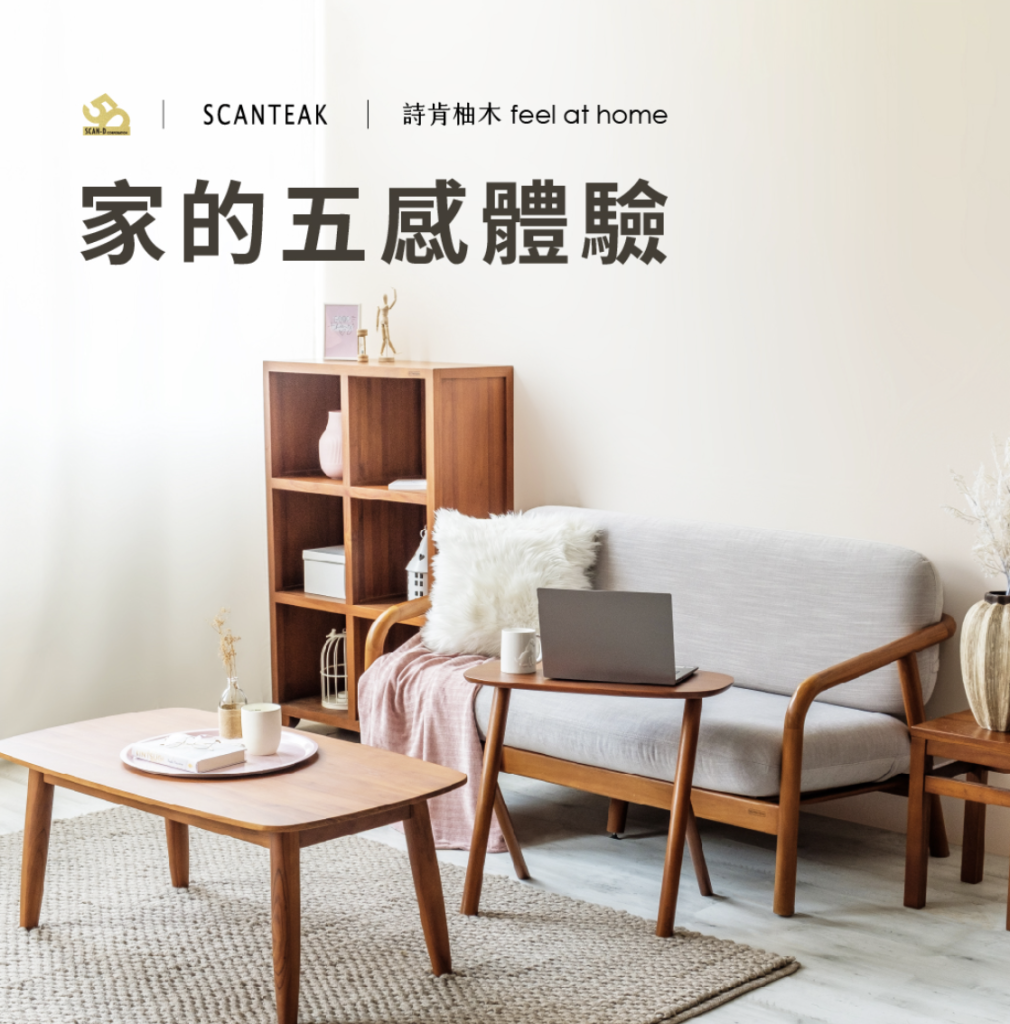 Image Credit: Scanteak Taiwan
Image Credit: Scanteak TaiwanBelieving that Taiwan, with its proximity and Chinese-speaking population, presented a valuable opportunity, Scanteak ventured there as its first overseas market. Scanteak experienced steady growth in Taiwan, establishing a presence in the country by 1993 with an annual turnover of S$5 million.
In 2004, Scanteak expanded its reach in Taiwan to 25 showrooms and entered Osaka, Japan. The following year marked the opening of Scanteak’s first flagship store in Taiwan, and by 2010, the brand achieved a significant milestone of surpassing 100 showrooms worldwide.
Following Scanteak’s rapid expansion, Jamie decided to embark on a comprehensive rebranding journey to better reflect the evolving preferences and aspirations of Scanteak’s target audience.
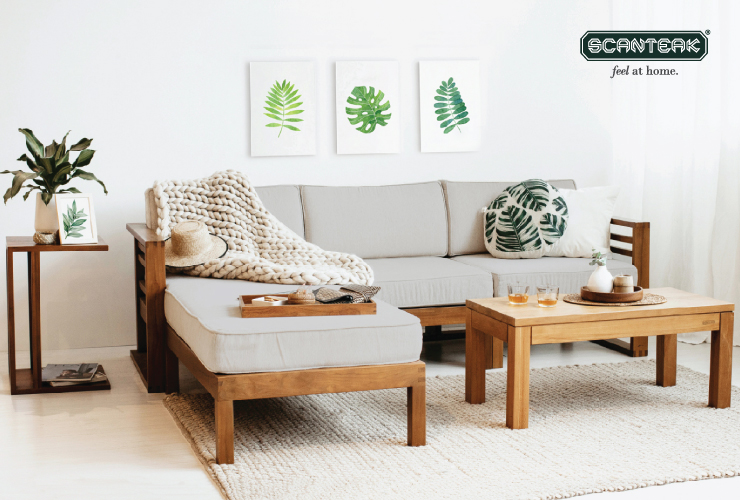 Image Credit: Scanteak
Image Credit: Scanteak The original tagline, “timeless beauty and quality,” was replaced with the more relatable and inviting tagline, “feel at home.” This shift aimed to establish a stronger emotional connection with customers, emphasising Scanteak’s commitment to creating an environment where people can truly feel at ease and comfortable.
In addition to the tagline change, Jamie revamped Scanteak’s corporate image, including its font and overall visual identity. Jamie also made crucial design alterations to the furniture itself, recognising the varying tastes and lifestyles in different markets.
While Taiwan favoured a more robust and bulky look, Singapore’s growing affluence and modernisation called for slimmer profiles and a more contemporary aesthetic. By adapting the furniture design to suit the preferences of each market, Scanteak successfully appealed to a broader customer base.
Leveraging her marketing expertise, Jamie also created Scanteak’s first TV commercial. This commercial, centred around the heartfelt story of a father and son, won accolades and viewers’ choice awards alongside renowned brands like McDonald’s and Singapore Airlines.
It marked the initial step in Scanteak’s rebranding journey, as the commercial stood out from conventional furniture advertisements. Translating it to Chinese, Jamie brought the commercial to Taiwan, where Scanteak’s branding journey gained momentum.
Jamie added that the media and advertising landscape has dramatically evolved over the years. During Scanteak’s early days, digital advertising was non-existent and people relied on traditional media instead.
Placing an advertisement in a newspaper was a costly endeavour, prompting businesses to pack as much information as possible to maximise the return on investment.
However, her dad’s mentor introduced a refreshing perspective: “less is more” when it comes to strategic branding. Instead of overwhelming potential customers with information, they learnt to create impactful advertisements with minimal content.
By featuring captivating visuals and compelling copywriting, Scanteak’s advertisements stood out from the crowd. The result? Lines formed outside Scanteak stores even before they opened, solidifying the importance of strategic branding in the company’s success.
Embracing digital innovation
 Image Credit: Scanteak
Image Credit: ScanteakRecognising the untapped potential of e-commerce, Scanteak boldly ventured into online retail at a time when the market has yet to embrace this channel fully.
Initially, Jamie’s father harboured reservations about selling furniture online, believing that customers needed to physically experience the comfort and quality before committing to a purchase. However, Jamie keenly observed the market shifting towards e-commerce and proactively secured a grant to launch Scanteak’s online presence.
As a trusted brand known for its distinctive furniture designs, Scanteak’s online strategy centred on showcasing the products in a visually appealing manner.
Jamie noted that while customers may not be familiar with the specifications, size, or colour variations of Scanteak furniture, they generally recognised its overall aesthetic and quality. By featuring the products online, Scanteak saved customers the time and effort of visiting a physical store, catering to their busy lifestyles.
The advent of the COVID-19 pandemic presented significant challenges to businesses worldwide, but Scanteak perceived it as an opportunity to further innovate digitally and develop new solutions. One key initiative involved establishing overseas subsidiaries.
The abrupt implementation of Movement Control Orders (MCO) forced many Malaysian staff members to hastily return to their home countries, potentially leading to a loss of valuable talent. In response, Scanteak set up makeshift offices equipped with Scanteak tables and chairs, enabling employees to work remotely.
Customer service was another area that underwent a significant transformation during the pandemic. With physical stores forced to close, Scanteak had to find alternative ways to maintain seamless communication with customers.
By digitising customer service, Scanteak leveraged its existing business knowledge database and engaged live agents who could address customer queries through online chat platforms. This approach not only ensured prompt and efficient customer support, but also demonstrated that superior service could be delivered without relying solely on phone conversations.
Supply chain disruptions posed yet another challenge for Scanteak during the pandemic. With some suppliers unable to fulfil orders due to unforeseen circumstances, Scanteak had to resort to innovative solutions. The brand independently sourced tabletops and table legs and assembled them in-house, displaying agility and adaptability to meet customer demand.
In addition, their expansion plans into Malaysia and other regions where they had set up warehouses faced significant disruption as a result of the COVID-19 pandemic.
My team of 10 staff members, including individuals from HR, accounting, marketing, design and procurement, were stuck there. I had everybody [from different roles] there, so I thought why not go on Lazada Malaysia and Shopee Malaysia. We also decided to set up a website during the whole COVID period to expand our [presence] since we can’t physically be there.
– Jamie Lim, CEO of Scanteak SingaporeThe brand’s online platform experienced significant growth and became its “bread and butter” during the lockdown period. This strategic move is also expected to pave the way for Scanteak’s physical expansion, which it aims to achieve in the fourth quarter of this year or in 2024.
While COVID-19 brought about unprecedented challenges, Jamie perceives it as a blessing in disguise, as it accelerated Scanteak’s digitisation efforts.
Despite the turbulent times, Scanteak witnessed robust business performance during the pandemic. As people spent more time at home, there was a heightened demand for home furnishings, and Scanteak emerged as a trusted brand alongside industry giants like Ikea and Courts.
Navigating challenges as CEO and the “boss’s daughter”
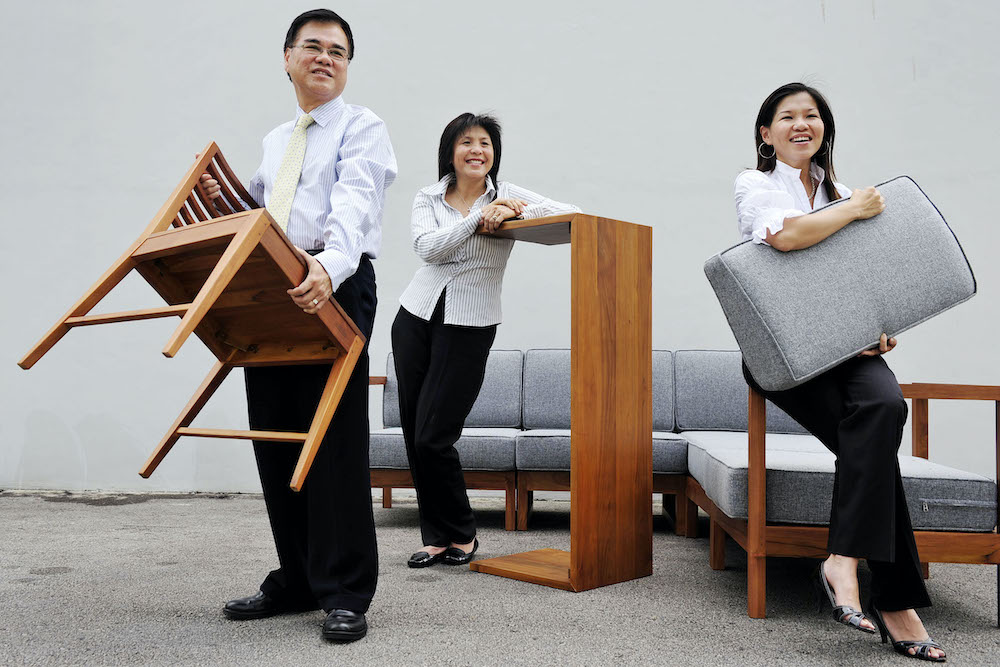 From left to right: Scanteak founder Lim Pok Chin, his wife Catherine, and their daughter Jamie Lim / Image Credit: Scanteak
From left to right: Scanteak founder Lim Pok Chin, his wife Catherine, and their daughter Jamie Lim / Image Credit: ScanteakAs the daughter of the company’s founder, Jamie’s journey into the business world was not without its challenges. Despite her qualifications, there were doubts and criticisms surrounding her involvement in the company.
Some questioned whether she was simply benefitting from her familial connections. However, Jamie quickly proved that being a second-generation leader was no easy task. The weight of the family legacy and the fear of letting down her father’s hard work pushed her to strive for excellence.
Jamie acknowledges that being the boss’s daughter came with higher expectations. Failure was not just a personal setback, but also a blow to the reputation and heritage of Scanteak. She knew that to truly establish herself, she had to be “extraordinary”, carving out her own identity while respecting the brand’s heritage.
Being the second-gen is actually much harder than being the first-gen. You have to prove yourself. As a first gen, if you fail, it’s okay, try again.
As a second gen, if you fail, it’s okay, try again — but you have shamed the legacy. You let down your father’s hard work. If you make it, good job; your dad gave you a solid foundation [to work with].
– Jamie Lim, CEO of Scanteak SingaporeOne of the significant hurdles Jamie faced early on was gaining buy-in and trust from long-standing employees who had worked under her parents for decades.
As a young boss who didn’t fit the traditional corporate mould (complete with funky-coloured hair at the time), Jamie faced resistance and skepticism from some employees, who disregarded her ideas solely based on her status as the boss’s daughter.
However, Jamie learned to navigate these obstacles by being more transparent with her words and finding common ground with her team. She understood the value of their experience and opinions and recognised the need to respect their perspectives.
Instead of imposing changes, she initiated conversations and sought their input on improving the furniture and enhancing sales. By framing these discussions as collaborative efforts, Jamie was able to bridge the generational and experiential gaps, fostering a sense of unity and progress within the company.
In 2019, Jamie’s transition from a marketing role to the CEO position marked a significant milestone in her career. Notably, she shares a unique dynamic with her brother, who also holds a leadership role within the Group. Aware of their distinct leadership styles, their father astutely assigned them “individual sandboxes” within the business.
By delegating leadership responsibilities to each sibling, Jamie and her brother were able to flourish in their respective roles. Her brother has since assumed the CEO position at Nova Furnishings (a company that Scanteak most recently acquired), while Jamie took on the role of CEO at Scanteak Singapore. This division of responsibilities not only prevented potential conflicts, but also empowered each sibling to make independent decisions and contribute to the family’s business empire.
Today, Jamie’s parents remain involved in the business, with her father serving as the chairman of Scanteak Taiwan. They take on an advisory role, granting Jamie and her brother the autonomy to make their own decisions and shape the future of the company.
She acknowledges her father’s occasional disagreement with her ideas, but values his two cents and appreciates that he trusts her judgment.
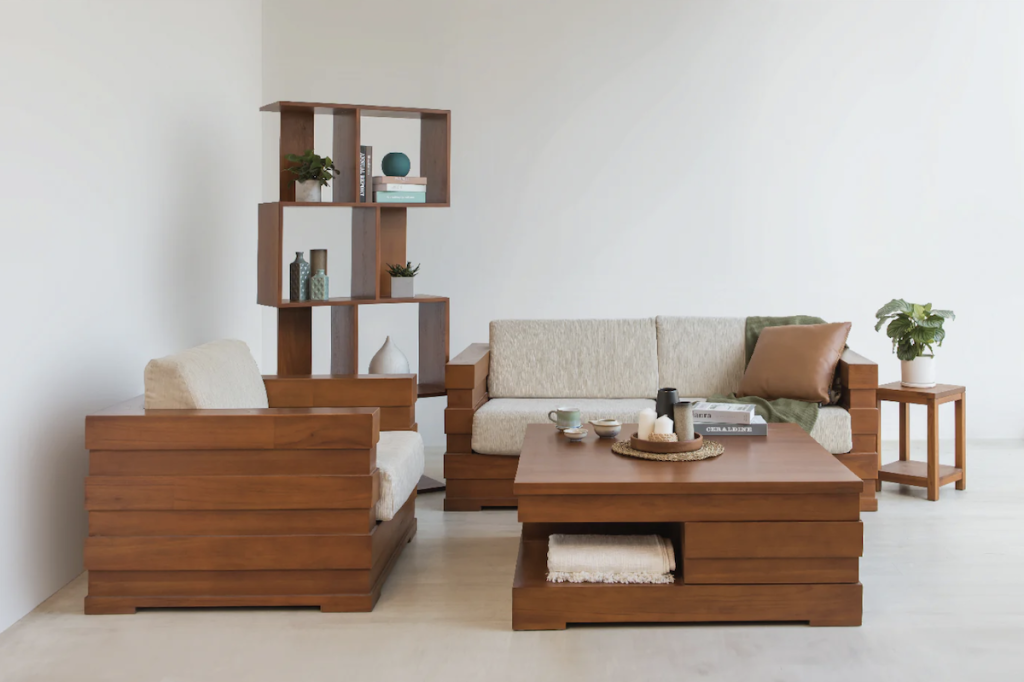 Jasen collection / Image Credit: Scanteak
Jasen collection / Image Credit: ScanteakOn one occasion, Jamie and her father collaborated on a sofa design for its Jasen series. It proved to be highly popular, but they did not take the necessary steps to protect their intellectual property.
Consequently, the design was widely replicated and can now be found all over the Internet. Jamie passionately illustrates this point as she scrolls through a dedicated photo album titled ‘Copycat’ on her iPhone, exposing a multitude of copycat designs, some even imitating Scanteak’s distinctive logo and tagline.
Learning from this lesson, she explained that they took proactive measures with their Prologue collection by obtaining a design patent. “Prologue was patented because we really did a lot of R&D into how to make a piece of wood long and thin without breaking,” she said.
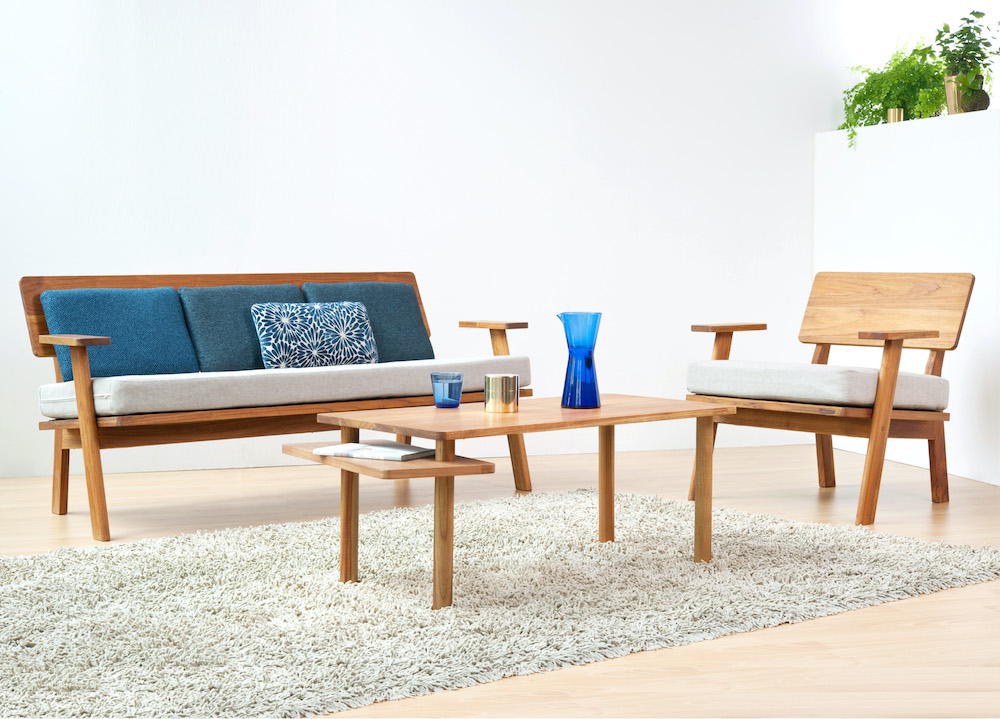 Prologue collection / Image Credit: Scanteak
Prologue collection / Image Credit: ScanteakLaunched in 2012, Prologue was primarily targeted at the Japanese market, and done in collaboration with acclaimed design studio Outofstock. Jamie initially questioned the hefty price tags associated with designer furniture, appreciating its aesthetic appeal, but acknowledging its inaccessibility for many consumers. This prompted Scanteak to introduce a designer range that offered a more affordable alternative.
Today, Prologue remains one of their best-sellers and has garnered numerous accolades, including the Singapore Good Design Award, IPOS Award for Design Innovation, Good Design Award in Japan, and the prestigious President’s Design Award. By safeguarding their creation through patent protection, Scanteak successfully shielded their design from replication by others.
Today, Scanteak’s trademark and patent portfolio stretches over into over 20 trademarks in 28 countries.
Jamie emphasised the importance for businesses to protect their creations, whether it be an invention, innovation, or brand. She candidly admitted that she initially failed to grasp this concept, but has since recognised its significance.
A footprint of 180 outlets worldwide
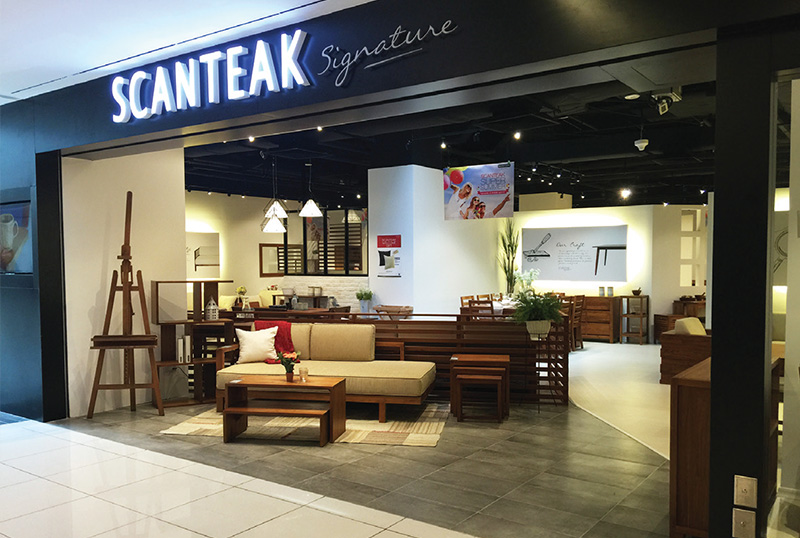 Scanteak Signature outlet in Singapore / Image Credit: Furniture & Furnishing
Scanteak Signature outlet in Singapore / Image Credit: Furniture & FurnishingWith a market presence in Singapore, Taiwan, and Japan, Scanteak operates around 180 stores globally. The majority of these stores, approximately 120, are located in Taiwan, demonstrating the brand’s popularity in the region.
While exact sales figures were not disclosed, Jamie mentioned that the Scanteak Group’s turnover is “north of US$100 million”, highlighting the company’s robust financial standing.
Scanteak’s growth strategy is focused on expanding its market reach within Southeast Asia, targeting countries like Malaysia, Indonesia, and Thailand. By prioritising markets that are within proximity and share language similarities, this strategic approach allows the company to capitalise on the “low-hanging fruits”, while laying the foundation for future expansion.
Reflecting on her business thus far, Jamie said that when she first joined Scanteak, Singapore had only three stores that were all “in the red”.
Through branding initiatives and achieving economies of scale, Scanteak managed to increase its outlet count to 15. However, the challenges of the COVID-19 pandemic forced some closures, reducing the total number to 11.
Nevertheless, the company’s turnover has grown significant since then, showcasing its resilience and adaptability.
As Scanteak looks to the future, the company envisions becoming the “LVMH (Louis Vuitton Moët Hennessy) of the home furnishings industry”. The focus lies not only on furnishing homes worldwide, but also on continuously evolving to meet changing customer needs.
Currently, Scanteak is venturing into the smart furniture realm. Instead of having customers select from existing designs at the store, Scanteak aims to enable any electrical furniture to become smart by simply plugging in a dongle.
With innovation as an important part of their business journey, Scanteak remains committed to growth and is actively seeking opportunities for further acquisitions.
When it comes to the valuable business advice Jamie received from her father, she emphasises the importance of working hard and working smart while maintaining flexibility and taking risks with integrity. Her father instilled the belief that success should not come at the expense of others or compromise ethical values and principles.
Furthermore, Jamie underscores the significance of staying faithful to small tasks. By excelling in even the smallest tasks and upholding integrity and values, success can be achieved and gradually build into a larger narrative.
With Jamie’s leadership and Scanteak’s unwavering commitment to quality and customer satisfaction, the brand continues to set new standards in the home furnishings industry, leaving a lasting legacy for generations to come.
Featured Image Credit: Scanteak

 ShanonG
ShanonG 























.jpg&h=630&w=1200&q=100&v=f776164e2b&c=1)








